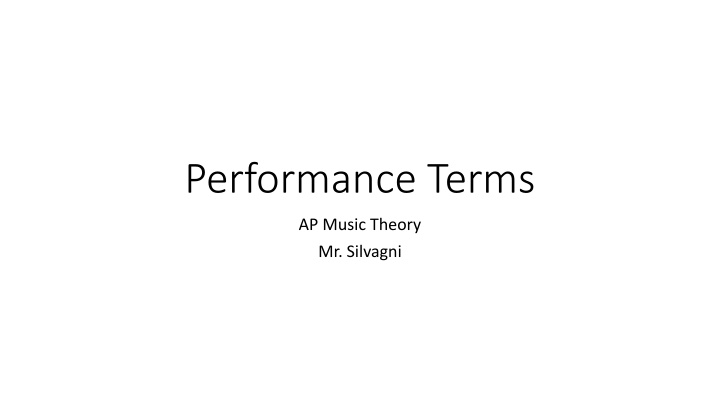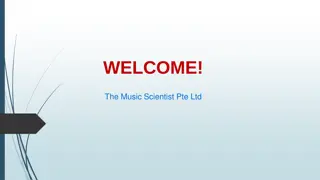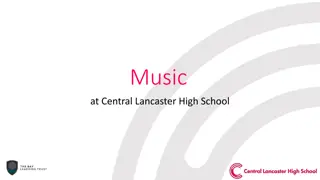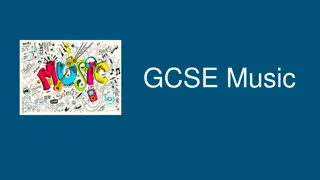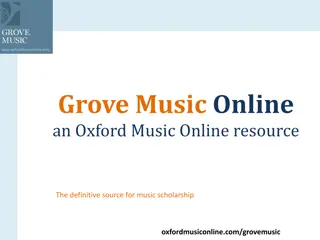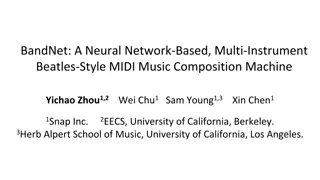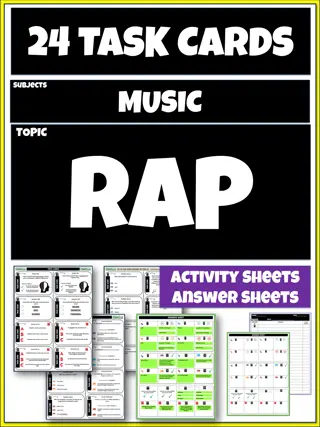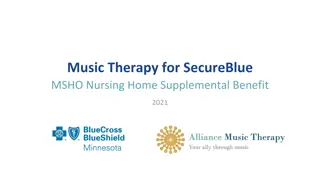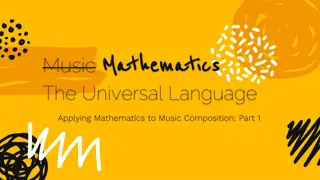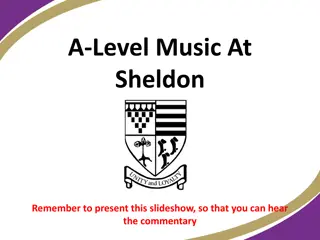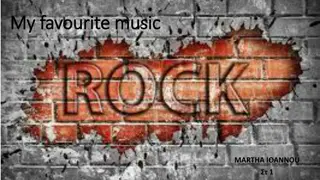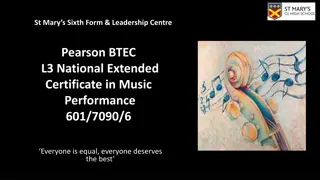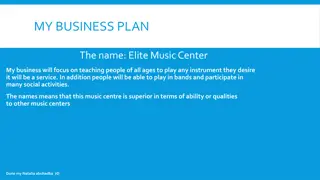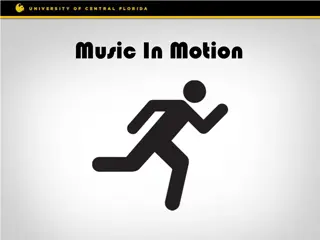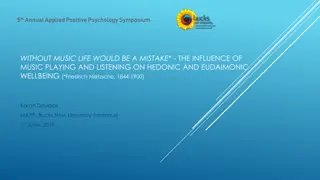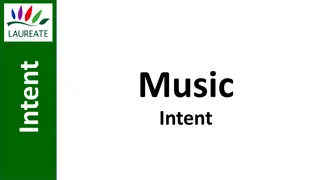Essential Music Theory Terms and Concepts by Mr. Silvagni
Explore key music theory terms and concepts explained by Mr. Silvagni. Delve into Italian heritage in music terminology, clarifying terms, dynamics, tempo, and Italian tempo terms. Enhance your understanding of performance terms crucial for mastering music theory.
Download Presentation

Please find below an Image/Link to download the presentation.
The content on the website is provided AS IS for your information and personal use only. It may not be sold, licensed, or shared on other websites without obtaining consent from the author.If you encounter any issues during the download, it is possible that the publisher has removed the file from their server.
You are allowed to download the files provided on this website for personal or commercial use, subject to the condition that they are used lawfully. All files are the property of their respective owners.
The content on the website is provided AS IS for your information and personal use only. It may not be sold, licensed, or shared on other websites without obtaining consent from the author.
E N D
Presentation Transcript
Performance Terms AP Music Theory Mr. Silvagni
Italian heritage Most terms in music come from Italian, though there are a few in French and German An exhaustive list of musical terms: https://en.wikipedia.org/wiki/List_of_Italian_musical_terms_used_in _English
Clarifying Terms Staying the same L istesso tempo at the same tempo Sempre Always Simile In the same manner Changing slowly Poco a poco little by little A small amount Non troppo not too much Poco little Un poco a little
Clarifying terms A large amount Assai very Molto very Less Meno less Mezzo half More Pi more With Con - with
Dynamics Dynamics indicate the volume and or mood of a piece of music. Here they are listed from softest to loudest ppp pianississimo pp pianissimo p piano mp mezzo piano mf mezzo forte f forte ff fortissimo fff - fortississimo
Other dynamic terms Crescendo increasing in loudness Decrescendo decreasing in loudness Diminuendo decreasing in loudness fp fortepiano forte immediately followed by piano rf or rfz rinforzando a sudden increase in loudness
Tempo Tempo refers to the speed of music Initial markings are in Italian and may be followed by a metronome marking, e.g. M.M. = 120 (Maelzel Metronome), referring to beats per minute The metronome marking will also refer to which note is played at the listed speed, e.g. quarter note = 120
Italian Tempo Terms Fast tempo Prestissimo very quick Presto quick Vivace fast and lively; vivacious Allegro quick; lively; bright; merry Medium tempo Allegretto moderately quick, but not as fast as allegro Andantino a little quicker than andante Andante moderately slow Moderato restrained or moderate Slow tempo Adagio at east, slow Adagio assai very slow Largo broad; very slow; dignified Larghetto slower than largo Lento slow Grave slow and solemn
Other tempo terms Speeding up Accelerando to increase the tempo gradually Stringendo to press forward Slowing down Rallentando to slow down gradually Ritardanto to slow down gradually Ritenuto to slow down suddenly Other tempo changes Rubato to take out of the stated tempo
Articuations Articulations mark how to play a note or phrase music. It may involve the attack, release, or the entire envelope of created sound. fz forzando forced; played with a sudden accent sf or sfz sforzato played with sudden emphasis fzp forzando piano played with a sudden accent and immediately becoming piano
Style markings Style markings identify the mood or expression used to play a part or whole piece of music Amoroso tender and affectionate Animato animated, lively Calando gradually softer and slower Cantabile in a singing style Con anima with life and animation Con brio with vigor and spirit Con dolore with sadness Con forza with force Con fuoco with fire, in a fiery manner Con moto with motion Deciso decisively D tach detached Dolce - sweetly
Style markings contd. Doloroso sorrowfully Espressivo expressively Furioso furious Giocoso humorous Grandioso with grandeur Grazioso gracefully Legato smooth and connected Leggiero lightly Maestoso majestically Marcato marked and stressed Marzial in the style of a march Morendo dying away Pesante heavy Religioso solemn, religious Semplice simple Sostenuto sustained Soto voce in an undertone Staccato short and detached Tranquillo - tranquil
Additional Playing Indications Arco played with a bow Arpeggio notes of a chord played in a sequence Caesura or cesura complete break in sound/grand pause (railroad tracks) Con sordino/senza sordino play with mute/play without mute D.C. al Coda go back to the start and play until you reach To Coda then jump to the coda D.S. al Coda go back to the sign and play until you reach To Coda then jump to the coda D.C. al Fine go back to the start and play until you reach Fine D.S. al Segno go back to the sign and play until you reach Fine Grace note miniature note played quickly before another note Octave sign (8va or 8vb) signal to play notes octave higher or lower Mordent ornament indicating first 3 notes of a downward trill (G F G) Pedal line Ped.______^ - guide pianist or vibraphonist to use sustain pedal Pizzicato played by plucking Tremolo rapid repetition of the same note (roll) Trill ornament where two notes a second apart are alternated rapidly Turn ornament where you play one above and below written note (D C B C)
Additional terms Alberti bass accompaniment pattern using a three note chord broken typically as root-fifth-third-fifth Cadenza solo section, typically out of time, to show off Opus work number Tre corde release left piano pedal Una corda press left piano pedal Vibrato fluctuation of pitch
